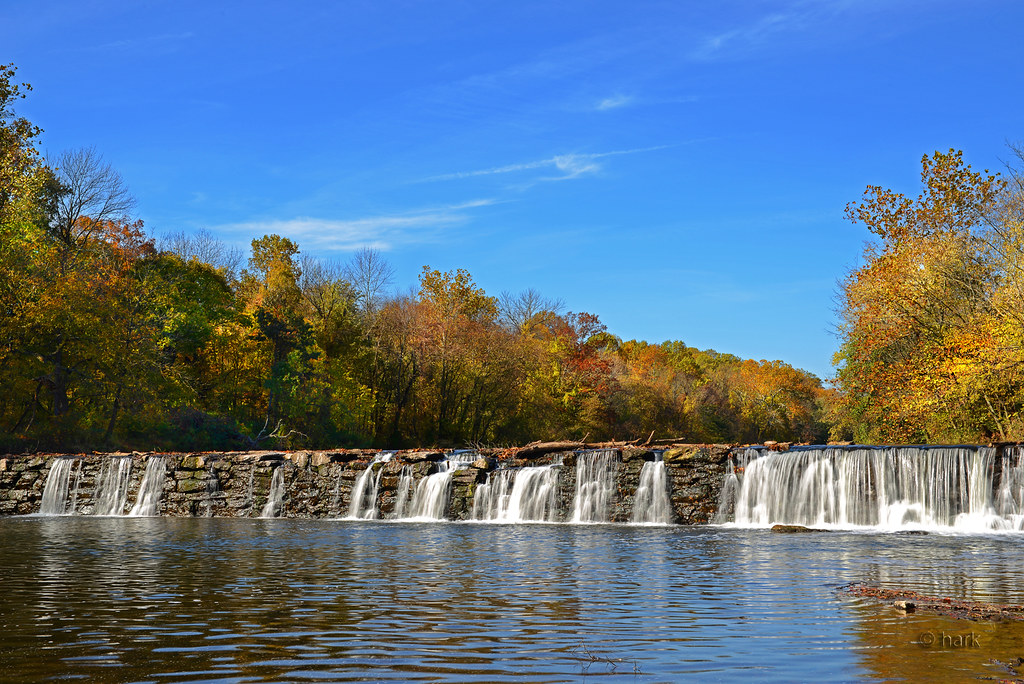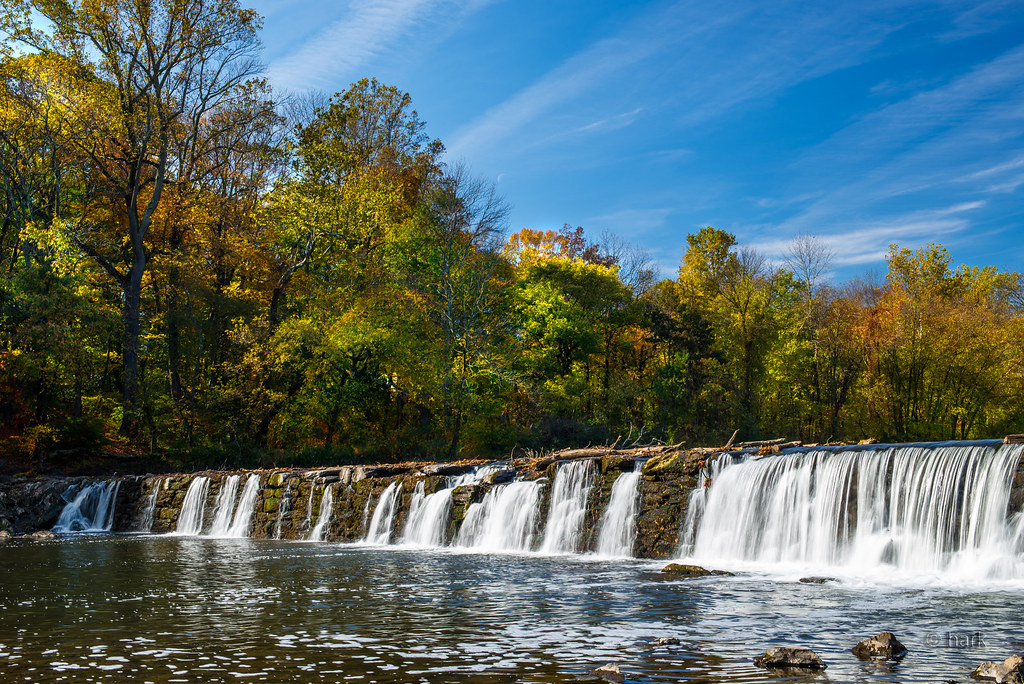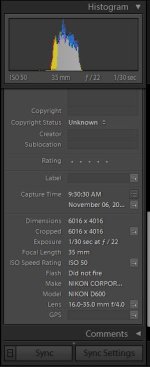Last week when I shot the waterfalls photos, I switched my ISO to the lowest setting possible--whatever is equivalent to ISO 50. The photos turned out fine as far as I can tell.
I have 2 questions:
1. Since the equivalent ISO technically isn't ISO 50 but is listed something like ISO LO 1.0 (just going off of memory without pulling out the camera), what disadvantages are there with using this ISO if it specifically isn't listed as ISO 50? I remember reading something about its not being exactly the same as ISO 50 but cannot remember why. I used a Circular Polarizer but don't own a Neutral Density filter at this moment in time and needed a slower shutter speed for the water. Do any of you see something (other than the speed of the water) that would make me NOT use this ISO for shooting in certain conditions. If I get a Neutral Density filter, then of course I can shoot at ISO 100.
2. While getting ready to write this post, I noticed something odd--the ISO isn't listed in the EXIF data. None of the original jpegs or RAW files show the ISO on the ones shot at ISO LO 1.0. That said, the first photo was edited strictly in PSE10 and contains no ISO; however, the second photo I opened as a RAW file in Lightroom 4 then exported as a jpeg and worked some more in PSE10. This one lists ISO 50 (no, I did not insert that info myself), but the original jpegs and RAW files of this shot do NOT show the ISO in the EXIF. Would a D600 owner please shoot something at the ISO LO 1 equivalent and let me know if the ISO shows up in the EXIF data of the original files? I'm wondering if it has anything to do with the 3 Nikon services the camera has endured since the beginning of September or if all D600s don't show ISO LO 1 (equivalent of ISO 50) in the EXIF. Thanks!
EDIT: All my files shot at ISO 100 and above DO list the ISO in the EXIF data. I'd just like to know if anyone else has problems with the ISO displaying if it is set to its lowest ISO setting.


I have 2 questions:
1. Since the equivalent ISO technically isn't ISO 50 but is listed something like ISO LO 1.0 (just going off of memory without pulling out the camera), what disadvantages are there with using this ISO if it specifically isn't listed as ISO 50? I remember reading something about its not being exactly the same as ISO 50 but cannot remember why. I used a Circular Polarizer but don't own a Neutral Density filter at this moment in time and needed a slower shutter speed for the water. Do any of you see something (other than the speed of the water) that would make me NOT use this ISO for shooting in certain conditions. If I get a Neutral Density filter, then of course I can shoot at ISO 100.
2. While getting ready to write this post, I noticed something odd--the ISO isn't listed in the EXIF data. None of the original jpegs or RAW files show the ISO on the ones shot at ISO LO 1.0. That said, the first photo was edited strictly in PSE10 and contains no ISO; however, the second photo I opened as a RAW file in Lightroom 4 then exported as a jpeg and worked some more in PSE10. This one lists ISO 50 (no, I did not insert that info myself), but the original jpegs and RAW files of this shot do NOT show the ISO in the EXIF. Would a D600 owner please shoot something at the ISO LO 1 equivalent and let me know if the ISO shows up in the EXIF data of the original files? I'm wondering if it has anything to do with the 3 Nikon services the camera has endured since the beginning of September or if all D600s don't show ISO LO 1 (equivalent of ISO 50) in the EXIF. Thanks!
EDIT: All my files shot at ISO 100 and above DO list the ISO in the EXIF data. I'd just like to know if anyone else has problems with the ISO displaying if it is set to its lowest ISO setting.


Last edited:

